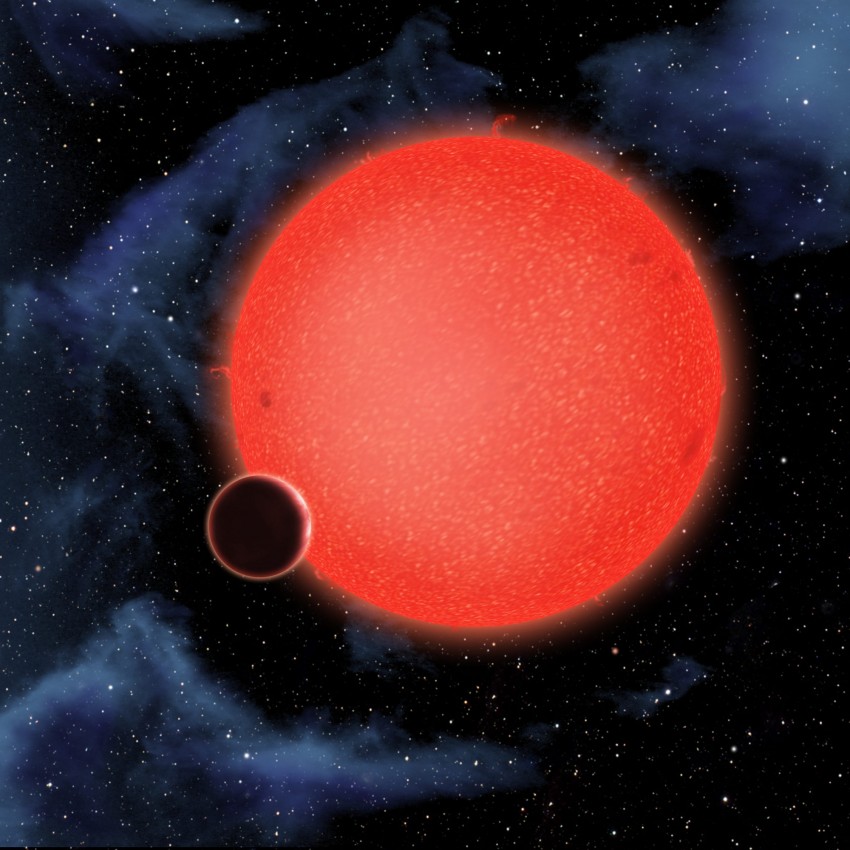From what we know around 30 light years from Earth in the "void" space is located about 100 planets capable of supporting life. "Life," "is very fuzzy word to identify creatures that could live on these planets, because people still can not define the sense of these word. The calculations have been carried out by scientists from the European Souther Observation shows that only in our Milky Way galaxy, there may be literally billions of planets lying in the zone of residence (at a distance from the parent star, as we find ourselves from the sun). Scientists from the La Silla Observatory used the HARPS spectrograph to investigate the 102 Red Dwarfs. They discovered around the Red Dwarf 9 rocky planets with a mass of not more than ten times the mass of the Earth. They also measured the distance from their parent stars. Calculations show that about 40% of Red Dwarfs in the Milky Way should have such planets, located in a residential area.
"Red dwarfs are in our galaxy are very common, there are about 160 billion, which means that only in the Milky Way, there are tens of billions of planets" - said Xavier Bonfils, lead author of the study.
"The orbits of some of these planets is likely to pass between their parent star, and the Earth, which will allow the study of the composition of the atmosphere and search for signs of life" - added Xavier Delfosse, a member of the research team.
This is a very pointed moment in the world of astrophysics, since it may be a clue, and explaining that crop circles have something in common with other forms of life than ours.
Assumptions about the planets capable of sustaining life are not unfounded, because the French researchers at the Laboratoire de Dynamique Meteorology believe they have found the first extrasolar planet that can support life similar to what we know. That planet orbits a red dwarf star Gliese 581, which for several years, attracting the attention of astronomers. It is a rocky planet, seven times heavier than Earth. It may seem that it is not suitable to sustain life. Which the planet receives energy from a star is three times less energy than our planet receives from the Sun, and one of the hemisphere is still directed toward the star, so it was thought that even if it has an atmosphere, the other hemisphere is permanently frozen, which prevents the maintenance of life .
French scientists did not want to rely on intuition and developed a new computer model that accurately simulates the atmosphere of exoplanets. He showed that if Gliese 581d has a dense atmosphere rich in carbon dioxide - which is possible for a planet of this size - it will not only stable, but allows the existence of oceans, forming clouds and precipitation occurrence. Gliese 851d is just 20 light years from Earth. It's still too far away to people or the probe sent by them can get there, but close enough that it should arise in the future telescopes that allow direct observation of the planet's atmosphere.
Of course there is still no certainty that the planet Gliese 851d has any atmosphere. French scientists have already developed, however, some simple tests by which you will in future be possible to detect its presence. Even if Gliese 851d is habitable, it certainly is to place different from the Earth. Probably the bright side of the planet is immersed in a reddish twilight caused by a star, a dense atmosphere and thick cloud cover. Moreover, its mass indicates that gravity has a greater impact there than twice the Earth.


This is interesting article. I'm waiting for more information.
OdpowiedzUsuńThank you very much.
Usuń